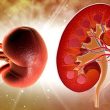The empirical prescription of anticoagulants after percutaneous coronary intervention (PCI), also know as post-procedural anticoagulation (PPA), is nowadays a common practice that uses various types of medications. Despite studies like HORIZONS-AMI and EUROMAX, in which 41% of patients received PPA, and the CCC-ACS registry, where 75% of subjects received PPA after primary PCI, European and...
Vascular Ultrasound in Percutaneous Closure Devices: Subanalysis of the UNIVERSAL-Trial
Analysis of percutaneous closure device placement when choosing an ultrasound-guided vs. a fluoroscopy-guided femoral approach. Transradial access is the access of choice in percutaneous coronary interventions, with a demonstrated benefit in mortality and bleeding when compared with transfemoral access. The latter, however, is still the access of choice in cases where large caliber introducers are...
Left Main Coronary Artery PCI Using State-of-the-Art Zotarolimus-Eluting Stents
Percutaneous coronary intervention (PCI) to the left main coronary artery (LMCA) with drug-eluting stent implantation is currently a major challenge due to the size of the vessel, the compromise of a bifurcation lesion in important branches, and the potential risk of complications. Available information on LMCA PCI comes from studies where DES stents were implanted...
The Most Important Articles of 2022 in Coronary disease
Discover the most important scientific articles of 2022on coronary disease in our website. An Abbreviated Dual Antiplatelet Regimen Is Also Safe in Patients at High Risk for Bleeding Undergoing Complex Angioplasty The MASTER DAPT study analyzed the results of an abbreviated (mean 34 days) vs. conventional dual antiplatelet therapy (DAPT) in 4579 patients treated with angioplasty and a biodegradable polymer sirolimus-eluting stent....
Is There Any Difference in Clinical Outcomes Between Transient and Persistent Acute Kidney Injury in ACS Patients after Invasive Treatment?
Acute kidney injury (AKI) following acute coronary syndrome (ACS) is associated with prolonged hospital stay and worse prognosis at followup. However, serum creatinine level increase can either be transient or permanent. At present, retrospective studies show transient AKI patients present similar survival rate to patients with no AKI. The prognostic implications of transient and persistent...
See the Presentations of the 12th ProEducar Fellows Course
During SOLACI-SOCIME 2022, our traditional education program for young interventionists ProEducar Fellows Course was held. Discover the presentations of the prestigious interventionists that made part of this 12th edition here below. Dr. Leandro Lasave (ARG) – “Transradial access: When and how? Practical lesson for access without complications” PRESENTATION Dr. Alejandro Alcocer (MEX) – “Practical demonstration of aortic...
Angioplasty in Nonagenarians Is Increasingly Frequent: How Does It Evolve?
Currently, the number of nonagenarian patients undergoing angioplasty (whether elective, urgent or emergency) has increased. This population is linked to more comorbidities and has barely been included in most randomized studies or registries. As such, we do not have robust evidence on this group. Researchers conducted an analysis of the J-PCI OUTCOME Registry, in which...
EuroPCR 2022 | The MITRA TUNE Registry
Left atrial enlargement with or without atrial fibrillation (AF), absence of valvular degeneration, and heart failure with preserved function have recently been identified as functional atrial mitral regurgitation (MR). This subtype of secondary MR currently appears to be underdiagnosed, and the need for treatment in the general population might be greater than predicted. The aim...
Can the Use of Intra Arterial Vasodilators Prevent Radial Artery Occlusion?
The incidence of post procedure radial occlusion (RAO) ranges from 1% to 12 % according to some studies. Different strategies to reduce RAO include the use of small caliber catheters, adequate anticoagulation and punction site care after procedure. Vasodilators are used to prevent radial spasm during procedure. However, using it after procedure should increase flow,...
The Most Read Articles of January in Interventional Cardiology
01- New Valvular Heart Disease Guidelines with Key TAVI and Mitral Regurgitation Updates Valvular heart disease management guidelines were updated last week by the AHA and the ACC. Read more HERE 02- High Risk Anatomy Challenges ISCHEMIA Outcomes According to this recent analysis published in JAHA, patients with stable Ischemic heart disease and high-risk anatomy benefit from revascularization...









